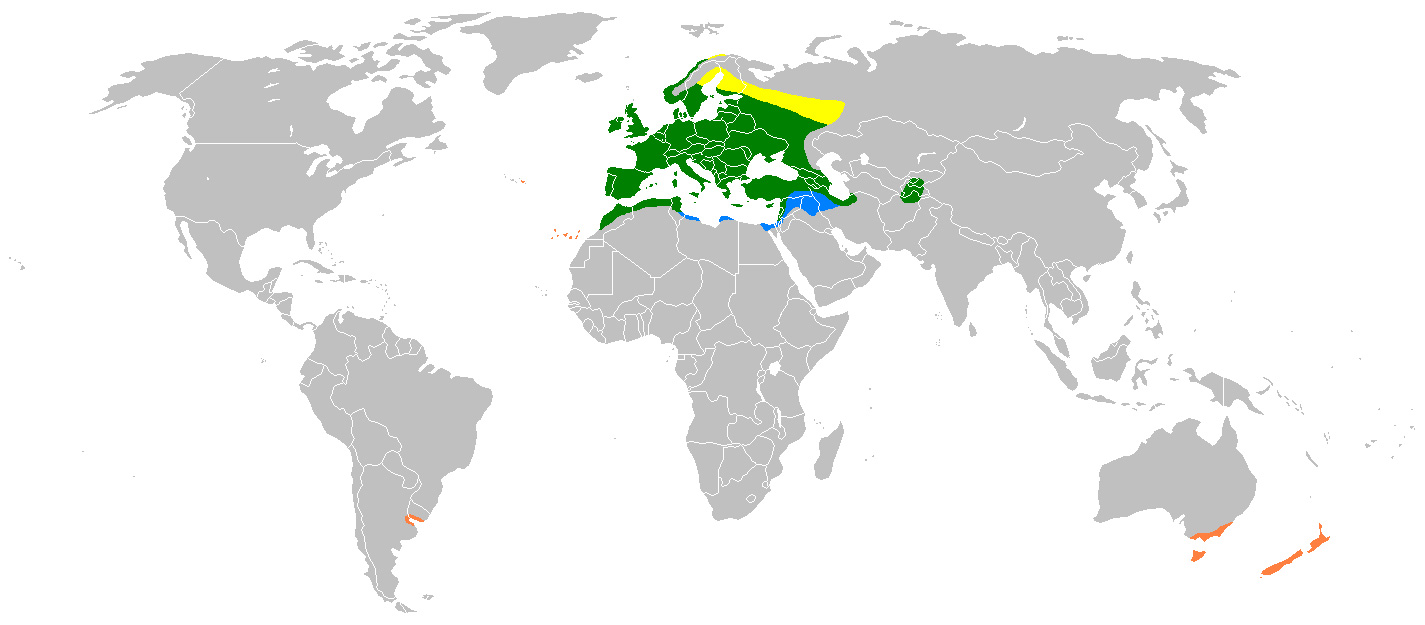
Váhy a míry
| Délka | od 14 do 15 cm |
|---|---|
| Délka rozpětí křídel | od 20 do 23 cm |
Popis zvířete
The European Greenfinch, scientifically named Chloris chloris, is a small passerine bird in the finch family Fringillidae. This bird is well-known for its distinctive green plumage, which serves as the origin of its common name. The greenfinch has been a popular subject of admiration among birdwatchers and nature enthusiasts across its native range, which predominantly covers Europe, North Africa, and western Asia.Adult European Greenfinches are characterized by their olive-green body, which exhibits subtle variations in shade across different parts of the body, with the brightest and most vibrant green typically found on the wings and tail. The wings also feature yellow patches, which become particularly conspicuous during flight. Males and females exhibit sexual dimorphism, with males displaying more vivid coloration, especially during the breeding season, to attract mates. The beak of the greenfinch is stout and conical, perfectly adapted for cracking seeds, which constitute the main component of its diet. Besides seeds, their diet may occasionally include small insects, especially during the breeding season when they seek additional protein sources.
The size of the European Greenfinch is comparable to that of a common sparrow, with a body length ranging from 15 to 18 centimeters and a wingspan that can extend up to 25 centimeters. They have a robust body shape, which, along with their strong beak, is an adaptation to their granivorous diet.
Greenfinches are gregarious outside the breeding season, often forming large flocks that can be seen feeding together in fields, gardens, and at bird feeders. Their social nature contributes to their resilience and adaptability in various environments, including urban areas where they have become a familiar sight. The bird's song is a melodic sequence of twitters and trills, which adds a charming backdrop to its habitats during the breeding season.
Breeding typically takes place between April and July. The nest, constructed by the female, is a compact structure of twigs, grass, and moss, often situated in bushes or trees. Females lay 4 to 6 eggs, which are incubated for about 13 to 14 days. The chicks are altricial, meaning they are born in an undeveloped state and require care and feeding by both parents.
The European Greenfinch has faced challenges from habitat loss, changes in agricultural practices, and disease. Specifically, the species has been impacted by an outbreak of trichomoniasis, a parasitic disease that has led to significant declines in some areas. Conservation efforts and studies are ongoing to monitor the species' status and ensure its preservation.
Despite these challenges, the European Greenfinch remains a widespread and generally common species, appreciated for its beauty, distinctive song, and the vibrancy it adds to its natural surroundings. As a subject of conservation interest and a beloved garden visitor, the European Greenfinch occupies a special place in the hearts of those who value wildlife and the rich tapestry of bird species across Europe and beyond.
Mapa výskytu

Podobná zvířata
Nové fotografie zvířat
Top 10 zvířat
- Dolphin gull (Leucophaeus scoresbii)
- Diana monkey (Cercopithecus diana)
- Moustached guenon (Cercopithecus cephus)
- Galápagos tortoise (Geochelone nigra complex)
- Stone loach (Barbatula barbatula)
- Japanese macaque (Macaca fuscata)
- Russian tortoise (Testudo horsfieldii)
- Greek tortoise (Testudo graeca)
- Common flying dragon (Draco volans)
- Vendace (Coregonus albula)


